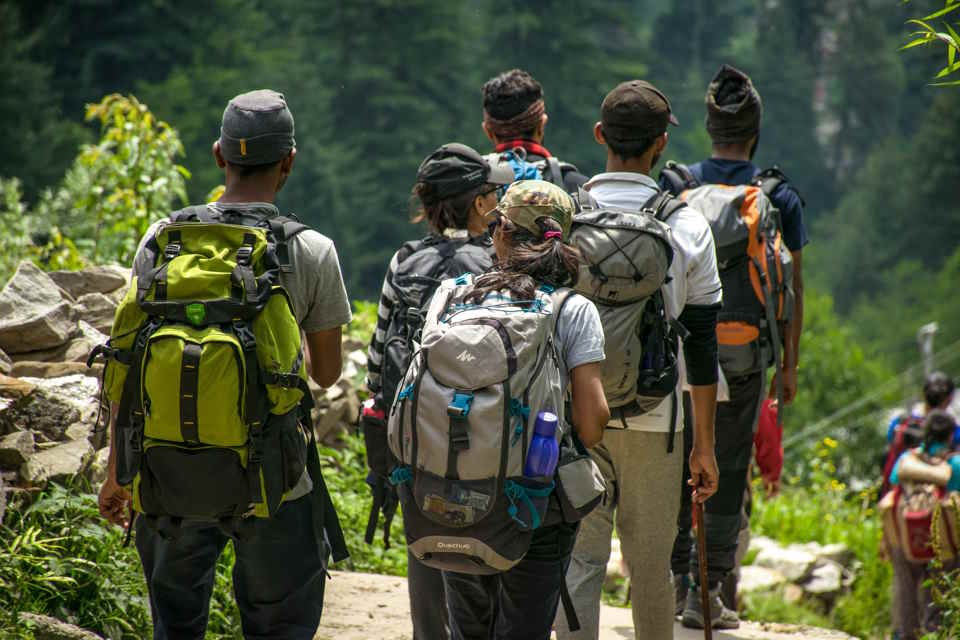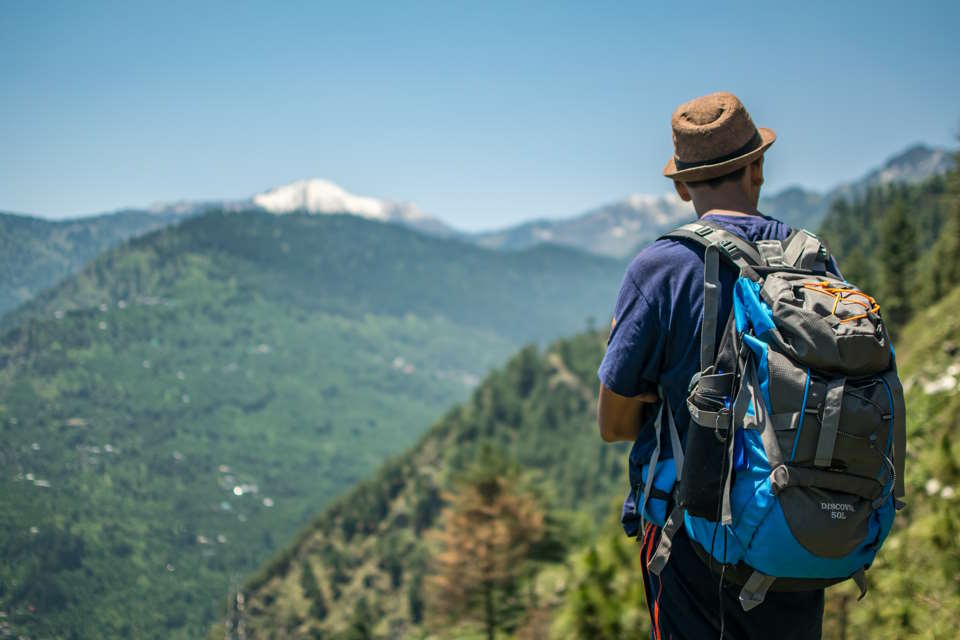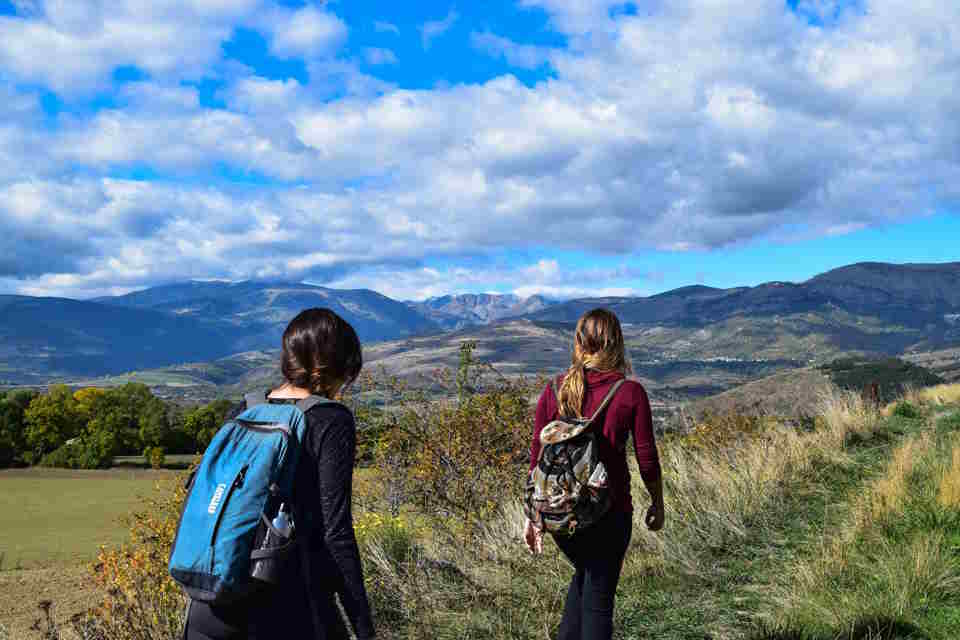Are you planning a hiking trip and wondering if you can bring your hiking poles on a plane? It’s a common question for outdoor enthusiasts who want to continue their adventures while traveling. In this blog post, we’ll explore the regulations set by the Transportation Security Administration (TSA) regarding hiking poles and other outdoor equipment. We’ll also discuss the benefits of bringing your hiking poles with you, as well as offer some tips on how to prepare them for air travel. Additionally, we’ll provide you with useful guidelines on how to store your hiking poles in your carry-on luggage to ensure a smooth and hassle-free journey. Whether you’re a novice hiker or a seasoned trekker, this post will help you navigate through the rules and tricks of bringing your essential hiking gear on a plane. So, let’s dive in and ensure that nothing holds you back from hitting the trails on your next adventure!Learn Tsa regulations & benefits of hiking poles for air travel. Get tips for preparing & storing hiking poles in carry-on. Avoid travel hassles.
Understanding Tsa Regulations

When it comes to traveling with hiking poles, it’s essential to understand the TSA regulations to ensure a smooth and hassle-free experience at the airport. Hiking poles are considered as sports equipment, and they are permitted in both carry-on and checked baggage. However, there are certain guidelines and rules set by the TSA that need to be followed to avoid any inconvenience.
First and foremost, it’s important to know that hiking poles are allowed in carry-on bags, but they must adhere to the TSA’s regulations on carry-on items. The length of the poles also plays a significant role, as some airlines have restrictions on the length of carry-on items. Always check with the airline and TSA guidelines before packing your hiking poles in your carry-on bag.
Additionally, if you plan to pack your hiking poles in your checked baggage, it’s crucial to secure them properly to avoid any damage during transit. TSA suggests placing the poles in a hard-sided container to prevent them from being damaged or causing harm to other baggage. It’s also advisable to inform the TSA officer if your checked bag contains hiking poles to prevent any delays during the security screening process.
Understanding the TSA regulations regarding hiking poles is vital for a stress-free travel experience. By being aware of the guidelines on carry-on and checked baggage, as well as knowing how to pack and secure your hiking poles properly, you can ensure a smooth journey through airport security and enjoy your hiking adventures without any setbacks.
Benefits Of Bringing Hiking Poles

Hiking poles, also known as trekking poles, are an essential piece of equipment for any outdoor enthusiast. Not only do they provide stability and support on rugged terrain, but they also offer a wide range of benefits that can enhance your hiking experience.
One of the main benefits of bringing hiking poles is the added stability they provide. By distributing the weight from your legs to your arms, they can help to reduce strain on your lower body and prevent falls on slippery or uneven surfaces. This is especially important when hiking in difficult or challenging terrain, such as steep inclines or rocky paths.
Additionally, hiking poles can also help to reduce fatigue and improve endurance. By engaging the upper body muscles, they can help to take some of the load off your legs, allowing you to conserve energy and hike for longer periods without feeling as tired. This can be especially beneficial on long hikes or multi-day treks.
Furthermore, hiking poles can also provide added support and assistance when crossing streams, traversing snowfields, or navigating through dense vegetation. With the use of hiking poles, you can improve your balance and confidence in these situations, making it easier to navigate through challenging terrain and enjoy the great outdoors.
Preparing Hiking Poles For Air Travel

When preparing to travel by air with your hiking poles, there are a few important steps to take to ensure they are ready for the journey. One of the first things to do is to clean your hiking poles thoroughly to remove any dirt, debris, or residue that may be on them from previous hikes. This will help prevent any issues during the security screening process.
Next, it’s important to protect the tips of your hiking poles to prevent any damage during transport. You can do this by using protectors or caps specifically designed for hiking poles, which can be purchased at outdoor or sporting goods stores. Additionally, wrapping the tips in a soft cloth or bubble wrap can provide extra protection.
Another important step in preparing your hiking poles for air travel is to adjust them to a shorter length if they are telescopic. Most airlines have restrictions on the length of carry-on items, so shortening your hiking poles can help ensure they comply with these regulations. Be sure to check with your specific airline for their guidelines on carry-on items and adjust your hiking poles accordingly.
Lastly, it’s a good idea to label your hiking poles with your name and contact information in case they become separated from you during your travels. This will make it easier for airport staff to reunite you with your hiking poles if they are lost or misplaced. Taking these precautions will help ensure that your hiking poles are ready for air travel and will arrive safely at your destination.
Tips For Storing Hiking Poles In Carry-On

When it comes to traveling with hiking poles, proper storage in your carry-on bag is crucial to avoid any damage during transit. One of the first tips for storing hiking poles in a carry-on is to make sure they are collapsed and secured. This not only saves space but also prevents them from getting caught in any airport machinery.
Another important tip is to consider using a protective case or sleeve for your hiking poles. This can help keep them safe from scratches and dings, especially if they are in close proximity to other items in your carry-on bag. Additionally, storing them in a case can prevent any sharp edges from poking through the bag and causing damage to other items.
It’s also a good idea to place your hiking poles in a dedicated compartment or sleeve within your carry-on bag. This can help keep them organized and prevent them from shifting around during travel, which could lead to damage. Additionally, having them in a separate compartment can make it easier to access them when needed.
Lastly, be mindful of the weight and dimensions restrictions for carry-on luggage set by the airline. Make sure that your hiking poles, along with their cases, fit within the specified limits to avoid any issues at the security checkpoint or during boarding.




